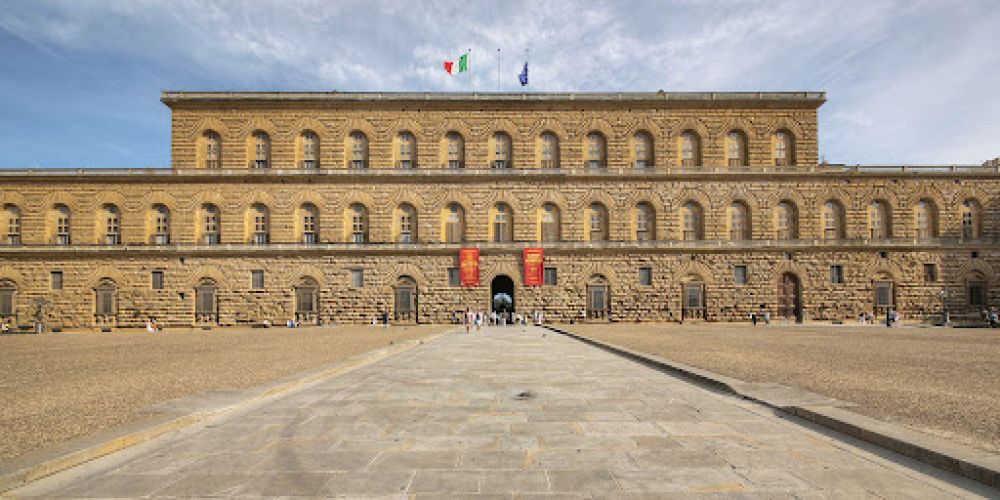

The Pitti Palace (Palazzo Pitti in Italian), situated on the south side of the River Arno, a short distance from the Ponte Vecchio in Florence, is a vast, mainly Renaissance palace. It was originally built in 1458 for the banker Luca Pitti, an ambitious Florentine who wanted a residence to rival the Medici's. Not long after its construction, the Medici family itself bought it in 1549, and it became the chief residence of the ruling families of the Grand Duchy of Tuscany. Through the centuries, the palace has undergone transformations and expansions, influenced by each era's reigning families.
The history of Pitti Palace as a tourist destination can be traced back to the late 18th and 19th centuries, when it was already a site of interest for cultured travelers on the Grand Tour. However, its status as a public museum dates to 1919, following the donation of the palace and its contents to the Italian state by King Victor Emmanuel III. Since then, it has been open to the public, showcasing extensive collections of paintings, plate, costume, and porcelain, as well as the Boboli Gardens, historically linked to the palace.
In recent years, there's been a significant interest in offering a more immersive cultural experience. Visitors to Pitti Palace have the opportunity to not only view masterpieces from the likes of Raphael, Titian, and Rubens in the Palatine Gallery but can also dive deeper into history at the Modern Art Gallery, which displays works from the 18th to the early 20th century.
Moreover, specialized tours that focus on themes such as the private lives of the Medici Family or the development of fashion over the centuries in the Costume Gallery have gained popularity. The integration of technology through virtual reality and multimedia installations is a trend that has been embraced to enhance storytelling and visitor engagement. Another growing trend is the emphasis on sustainability and cultural preservation, reflecting a growing global consciousness about responsible tourism.
The Pitti Palace complex includes several distinct attractions: the Palatine Gallery, the Royal Apartments, the Gallery of Modern Art, the Silver Museum, the Porcelain Museum, and the Costume Gallery, as well as the Boboli Gardens. Visitors are encouraged to check opening times and ticket options online in advance, as these can vary seasonally and include combinations for different parts of the palace and gardens.
Tourists are also advised to allot sufficient time to explore the extensive palace and gardens, with many opting to spread their visit over multiple days. Furthermore, for those interested in a more comprehensive understanding of Florentine art and history, combined tickets with nearby Uffizi Gallery and Accademia Gallery are suggestible.